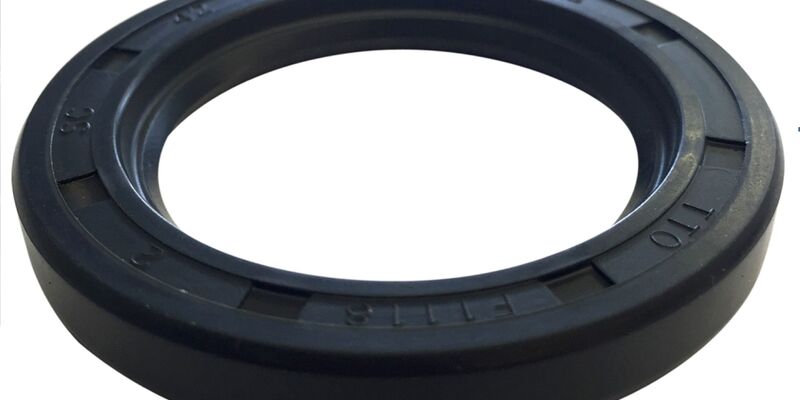
Installing an Oil Seal – Step by Step
Prior to Oil Seal Installation
The oil seal should undergo thorough inspection to ensure there are no flaws or deformities. A very small scratch on the OD can cause leakage in the seal. Evaluate the bore to confirm no abrasions or residue are present. The seal and shaft should be lubricated, to ensure the lip protection during its first run.
Ways to Install
Oil seal installation tools are recommended for use when installing rotary shaft seals, to facilitate proper engagement and decreases the likelihood of seal cocking. When using a press fitting tool (preferably pneumatic or hydraulic press), make sure the tool has an OD .01″ (.25 mm) smaller than the size of the bore.
Seal Cocking
Seal cocking is when one side of the sealing lip has greater shaft interference, which can negatively impact the oil seal’s function. This causes higher heat generation and makes the sealing lip harden and crack. In worse cases, this may dislocate the spring from the sealing lip.
Spring Back
When using a rubber-covered OD, the seal could spring back after installation. The rubber OD of the seal and the bore produce friction and can cause the seal to withdraw from the installation point, after being pressed in.
Appropriate Ways of Installation
Housing Surface Stop Installation
The bottom of the installation tool meets the machined housing face.
Housing Stop Installation
The bottom of the seal is flush with the interior shoulder of the bore.
Surface Stop Installation
The bottom of the installation tool meets the machined housing face.
Installation of Seal Over Splines
The installation tool is lubricated, preventing seal lip damage from splines, keyways, and unchamfered shafts.
Strike Plate Installation
Proceed cautiously to ensure seal and bore align properly as the seal is being installed.
Shaft Stop Installation
The bottom of the installation tool meets the face of the shaft.
Inappropriate Ways of Installation
Described below, are incorrect ways to install an oil seal. These mistakes are seen rather frequently, however are not necessarily understood nor condemned within the industry. Incorrectly installed oil seals can be dented and contorted, thus diminishing its function. Improper installation, it will be cocked in the bore and fail in service.
Incorrect Driving
Use a suitable driving ring while installing a seal. Utilizing an inappropriate driving ring can cause deformation and misalignment of the seal.
Undersized Installation Tool
If the installation tool’s driving diameter is too small, this could cause the seal to deform during installation.
Inadequately Engineered Installation Tool
If the installation tool is not correct for the seal, this may cause deformation.
Misalignment Errors
If the tool and bore do not meet evenly, the seal can become deformed and/or cocked in the bore. Thus, creating a leak path for the matter being sealed.
https://www.search4parts.co.uk/blog/oil-seal-installation-guide
https://www.search4parts.co.uk/blog
https://www.search4parts.co.uk

